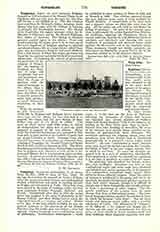

Tongerloo, Abbey of, near Antwerp, Belgium, founded in 1128 in honor of the Blessed Virgin, by de Giselbert, who not only gave the land, but also himself became a lay brother in it. The first religious were sent from St. Michael’s Abbey, Antwerp, under Henry, who had come with St. Norbert to Antwerp to extirpate the Tanchelmite heresies. The charter of its foundation was signed, amongst others, by St. Bernard of Clairvaux and by the Blessed Waltman, first Abbot of Antwerp. The Bishop of Cambrai granted synodal rights to the abbots. From very small beginnings the abbey grew to be in time one of the most important in Belgium, making its spiritual and social influence felt in a large district called Campine, now in northeast Belgium and south Holland, then a wild district in which but scanty provision was found for the spiritual and social needs of its scattered inhabitants. Considering the scarcity of priests and the good done by the religious of Tongerloo, the bishops of Cambrai, the chapters of Liège and Maastricht, and several landowners confided the charge of parishes, with the right of patronage, to the abbey; thus it came to pass that in time the abbey had to provide priests for some forty parishes, or small Norbertine residences, in these parts.
With the erection of new dioceses (1559-60) in Belgium and Holland, heavy burdens were cast on the abbey, for not only had it to provide the funds, but the new Bishop of Boisle-Duc was put at its head as abbot. This state of affairs lasted until 1590, when, to obtain its independence, the abbey had to give up much property in support of the new diocese. Meanwhile the Calvinists had become very powerful in Holland and, in their hatred of the Catholic Church, had put many Catholics to death. Amongst those who received the crown of martyrdom are reckoned three religious of Tongerloo, viz.: Arnold Vessem and Henry Bosch in 1557, and Peter Janssens in 1572. The abbey has always promoted education. Bishop Ophovius says that its religious were educated in omni pietate et doctrines and Miraeus, that it was foecundum pastorum Seminarium. It possessed one of the largest libraries, and was able to take up the work of the Bollandists. (See Backx; Premonstratensian Canons. Bollandists.)
F. M. GEUDENS

